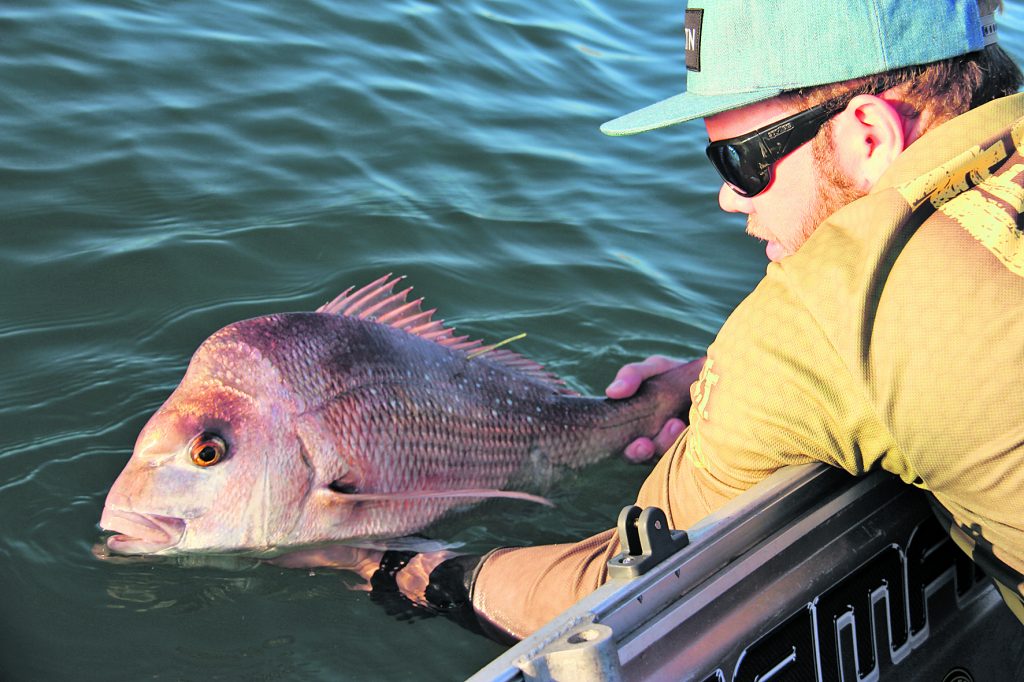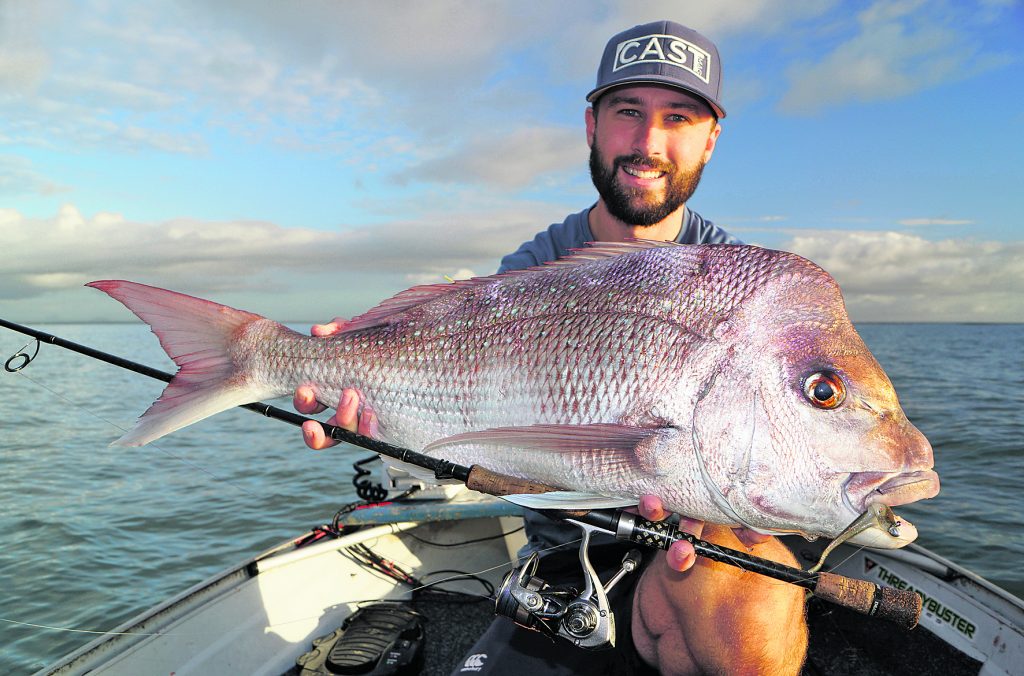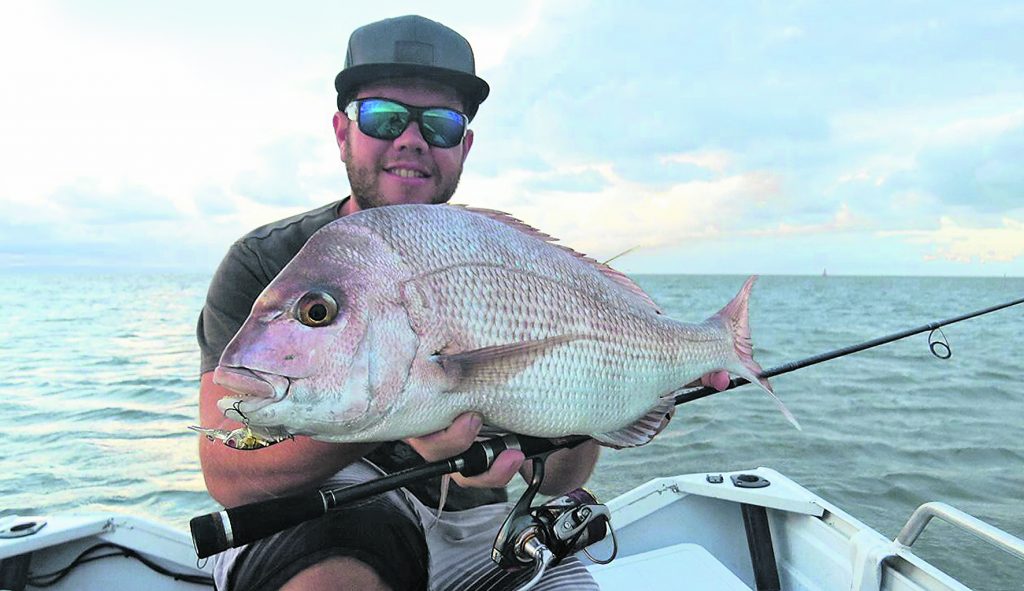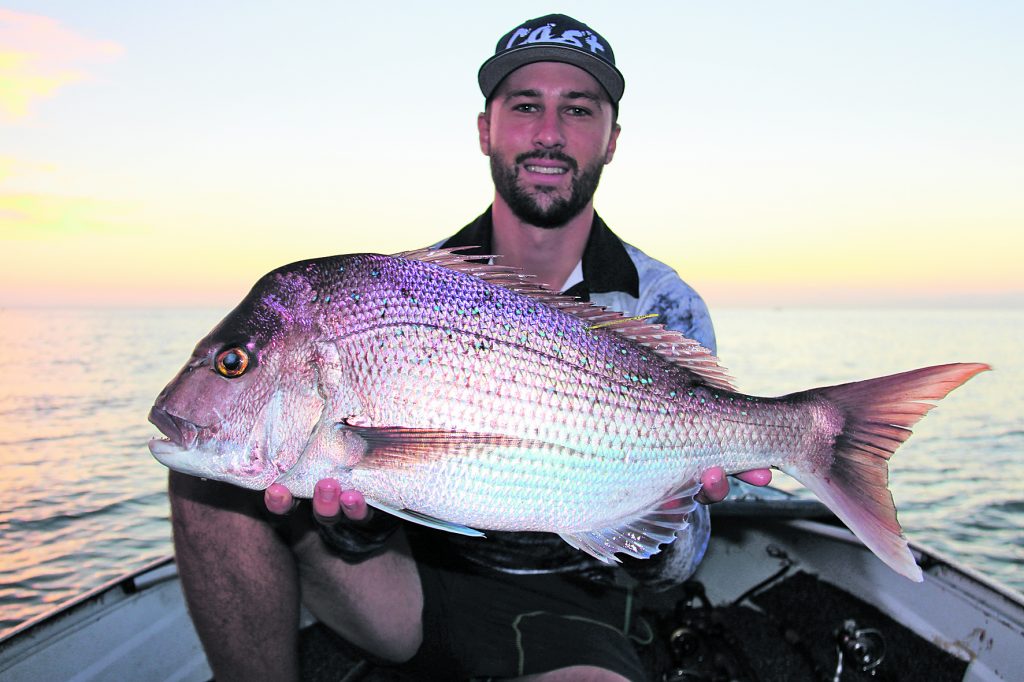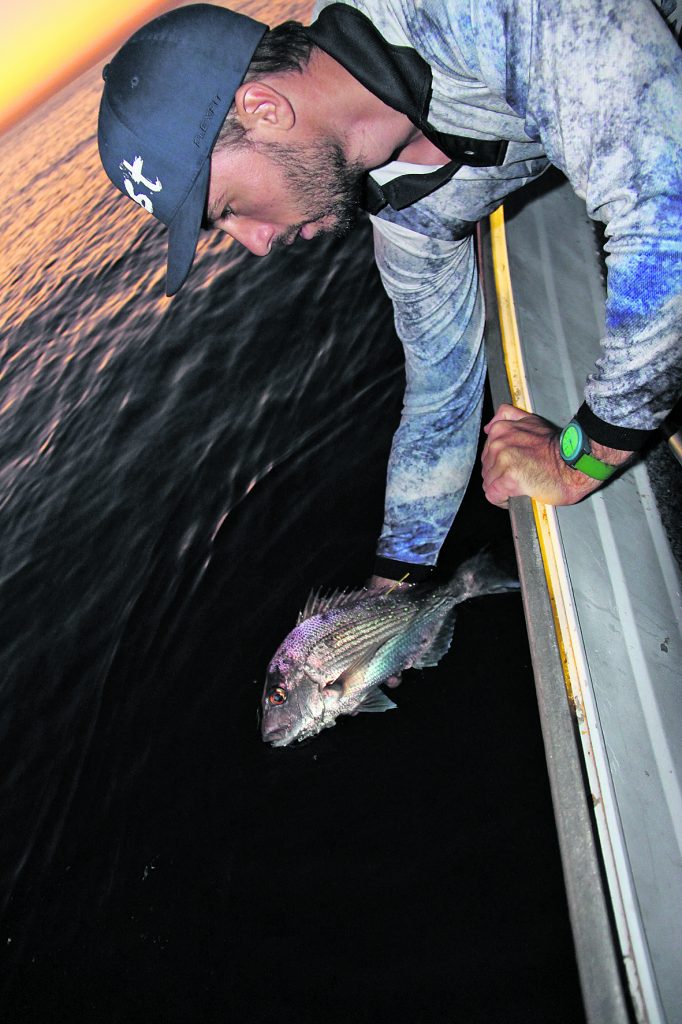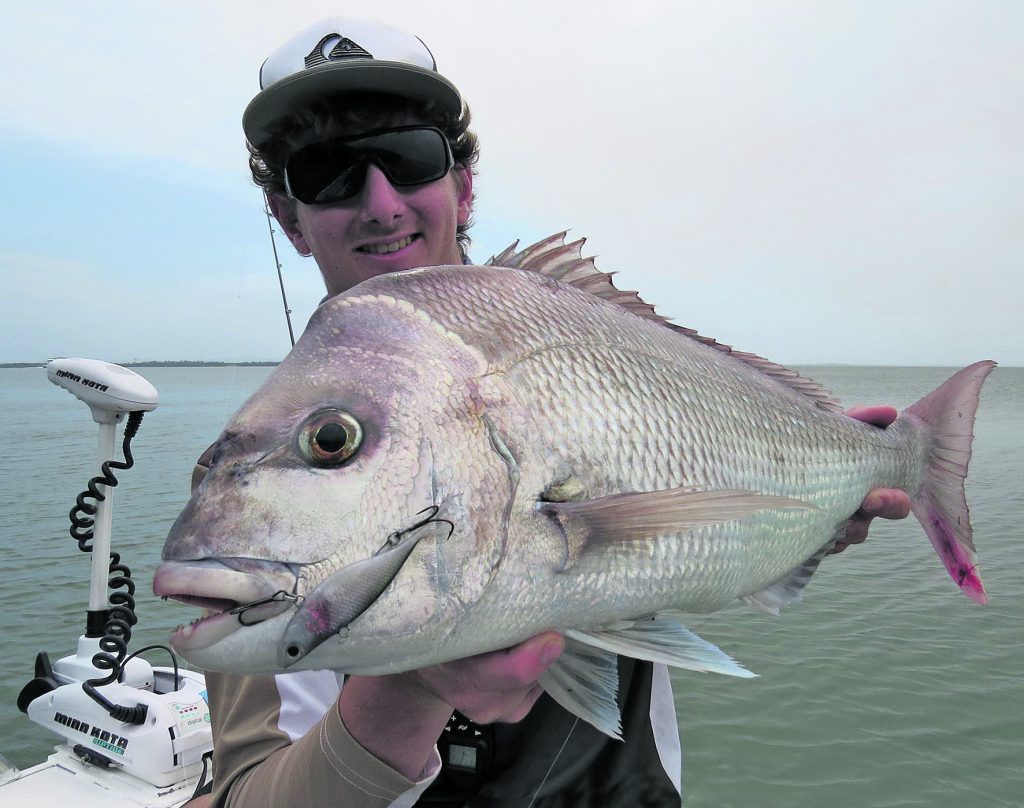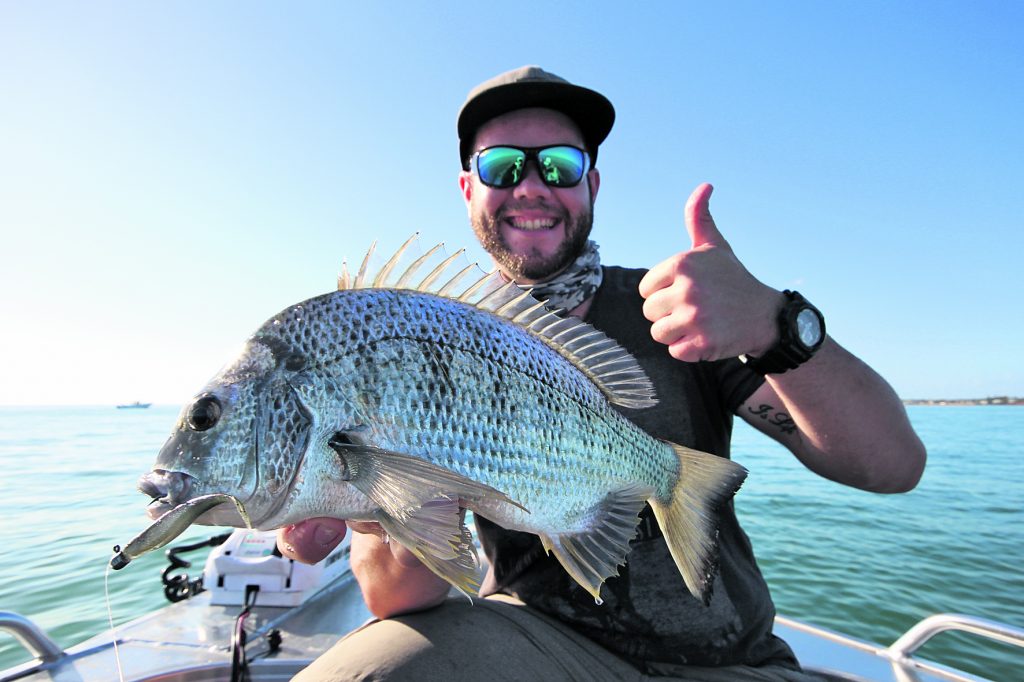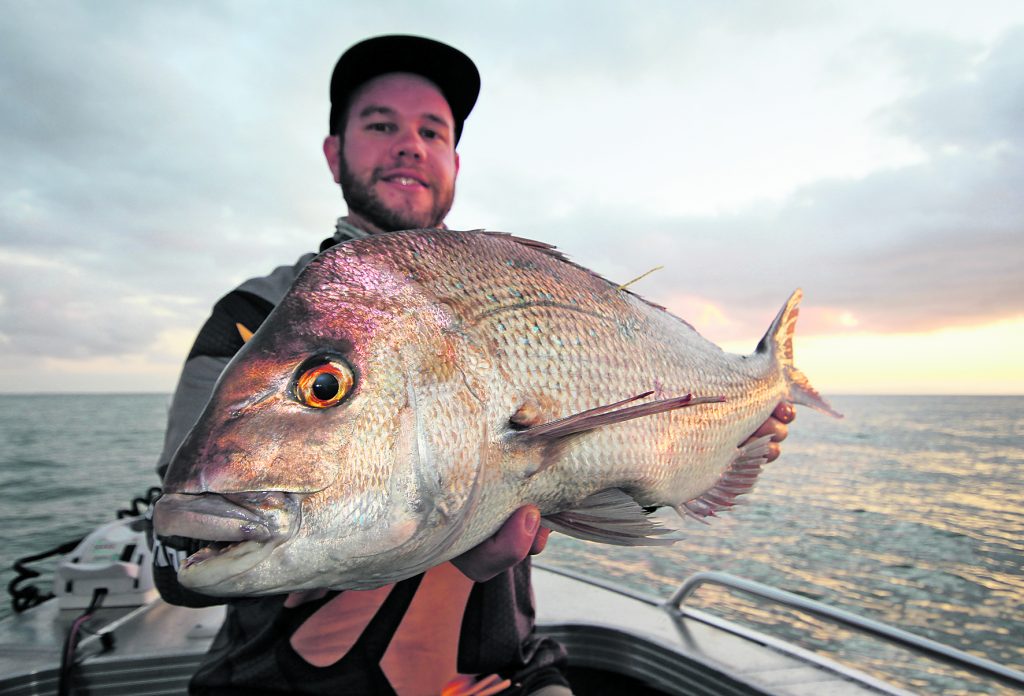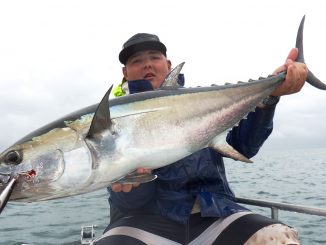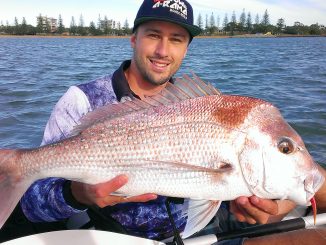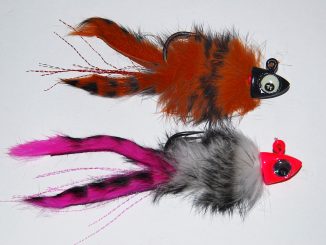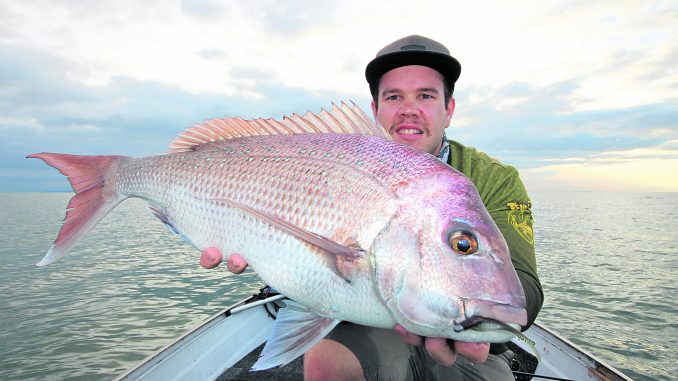
by Reece Thomas •
Living in Brisbane has given me some great opportunities to fish a wide area of South East Queensland and take advantage of the species that call the waters home. But for me, it doesn’t get any better than arriving at the boat ramp pre-dawn on a calm morning and setting off to target snapper on lures in the shallow waters of Moreton Bay. I started to focus on fishing for snapper around seven years ago and it didn’t take long before I was addicted.
I use the term ‘shallow water’ to describe the water that I fish as it is not often I find myself casting a lure for snapper any deeper than 5m. There are a lot of suitable shallow areas throughout Moreton Bay that can be easily accessed by small boats and kayaks.
This style of fishing is focused on depths of 1.5-4m. In these areas, low light hours (sunrise and sunset) will always yield the best results as the snapper take full advantage of the low light and move into these areas to feed among the structure.
Fishing in the shallows can provide some exciting sessions, as you never know what size fish you may encounter. Hooking juvenile snapper and 80cm+ beasts can easily happen in the same session, but numerous other species also call these areas home. Other species can include yellowfin bream, grass emperor, estuary cod and mulloway just to list a few.
Snapper can be targeted year round within the bay, however, from June through to September sees the numbers increase, coinciding with cool water and schools of bait. I am a strong believer that they feed around particular moon phases and tides throughout different areas of the bay and have been able to prove it. This has been achieved by spending time on the water and recording catch details and observations.
Snapper are a forage feeder but can also be an aggressive hunter. When using lures, you are actively targeting the fish. Therefore, finding the structure is the first step. This can consist of anything from reefs, ledges, drop-offs and gravel beds to artificial rock walls, pylons and artificial wrecks. Most of this is visual, however, having a sounder can be helpful in these areas to locate any unseen structure and bait.
Fishing in shallow water requires a lot of stealth, keeping any noise to a minimum. Using an electric motor to position the boat into these areas without spooking feeding fish is a great advantage. This approach can also be achieved without the aid of one by setting a drift. Just remember to take into consideration wind speed, direction and current.
Once in position pepper the area, making long casts downwind and hard up against the structure. Move along at a slow pace covering ground until fish are located. If fish are in the area feeding, it normally won’t take long before you have attracted their attention. Snapper love to hit a lure on the drop when using sinking lures. Take notice of any line coming off the spool faster than normal as your lure sinks.
GEAR CHOICE
I will generally have rigged 3-4 rods ready to go, as it is always handy to have another rod at your disposal. Normally, this comes into play after a bust off or snag and this saves valuable time re-rigging.
My approach to targeting snapper is to fish as light as possible. I prefer rods ranging from 2-4kg and 3-6kg, matched with 2000, 2500 and 3000 sized spin reels. I look for a fast to medium action style rod, around 7ft in length. This gives you enough power to set a hook into their hard-boned jaw, but still enough finesse to fish light braided lines and fluorocarbon leaders. It will also allow for casting of lightly weighted lures.
Reels are spooled with various brands of braid from 8-12lb. Selecting a leader to tie to the braid can vary depending on location and water quality. Some days a 6-8lb leader is needed to entice wary fish in clear water. However, a general starting point would be 12-14lb fluorocarbon leader. This will also give you a little more confidence when you’re hooked into that big fish.
Fishing for larger snapper around structure is relatable to walking an untrained dog – the harder you pull, the harder they will pull back.
Now you have the gear selection, it’s time to decide on which lure to tie on.
SOFT PLASTICS
Tackle shop walls are flooded with multiple brands of plastics that will catch snapper. For most anglers new to soft plastic fishing, this can be an overwhelming task.
When selecting a soft plastic for snapper, keep two things in mind. Firstly, tail action. They love a slow wafting lure with a good tail action. Secondly, match this on a light jighead to allow for a slow sink and you have the perfect combination.
Likewise, match the hatch – it’s important to take notice of any bait present in the area and to match lure size and colour accordingly. For example, this could mean fishing a small jerk bait style plastic if hardiheads or small pike are present. Alternatively, a prawn style plastic will be effective if fleeing prawns are being chased down. Generally, soft plastics from 2.5-4” in size will cover most bases.
Fishing in the early hours of the morning is a great time to select a darker, more naturally coloured plastic. Dark shades of green, brown or red help create a distinct silhouette. As the sunrises and visibility increases within these shallow waters, lures with UV colours or more transparency can be a good switch.
Jighead selection needs to be kept as light as possible and this can vary depending on water depth and tidal flow. A 1/8-1/6oz jighead with a good quality, strong hook is generally a good starting point. A snapper’s powerful jaw structure will make quick work of any light gauge hook.
There are various techniques for working soft plastic lures. One option is a slow retrieve with long lifts of the rod, allowing the lure to rest on the bottom for 10-15 seconds. Another is a faster paced approach with multiple short lifts of the rod, allowing the lure to dart or hop across the structure. It is important to remember that you control every part of the lure’s movement with the rod and reel. In doing this, your aim is to regulate how it imitates a baitfish. Ultimately, try different variations of retrieval to key into one that triggers a reaction.
HARDBODIED CRANKBAITS
Hardbodied lures can be a really effective and enjoyable method for catching snapper. The two simple techniques for using these are casting and trolling. Smaller crankbaits in the 40-70mm size and diving depths of 2-3.5m are best suited to the casting approach.
An effective method is aiming a cast along a reef edge, rock wall or similar structure and retrieving with a slow wind. I prefer to use a floating or suspending lure and crank it down into the structure before letting it rise for a few seconds and repeating. This will see your lure presented in the zone ready to be ambushed.
It’s a good idea to upgrade the factory trebles and split rings on most of these smaller lures if you plan to target snapper.
Trolling is a good method to use in areas that you haven’t fished before as a lot of ground can be covered. Keeping a close eye on the sounder, while having rods secure in the holders, will help you locate any deeper reef drop-offs and ledges along the way. Lures with a larger profile of 60-100mm and diving depths of around 3.5-5m are ideal for this method.
VIBRATION LURES
Vibration lures are a more suited approach to present to schooling fish in deeper water. This includes areas like the Brisbane River and deeper artificial wrecks and reefs located throughout Moreton Bay. Using soft vibes up to 20g or small metal vibes in 1/4-3/8oz will ensure your lure is kept in the zone. Attach these to the leader with a loop knot, enabling the lure to perform at its maximum action.
When using small, subtle hops along the bottom, these lures put off a strong vibration and can draw the attention of an aggressive snapper. When fishing a vibe in deeper water, I like to feather the spool on the drop to control the line for a slower sink rate.
SUNTAG AND SNAPPER
Around 18 months ago, I joined Suntag and began to tag my fish through this organization. I am a passionate catch and release angler and like most, I was curious to know the movements and growth of the fish, particularly snapper in Moreton Bay. It’s only early stages and with the help of a few keen mates we have managed to tag over 220 snapper, with a few recaptures being reported.
By far the most interesting was a fish that I tagged recently, which was recaptured just 6 days later in the same spot. If you happen to catch a tagged fish, it’s a small process to record the tag number, size, location, date and report these details via phone or the website. By doing this you can help contribute to the research.
GO SHALLOW
Before fishing in Moreton Bay or new areas, make sure to familiarize yourself with Marine Parks as there are numerous zones throughout the Bay. Also be aware of legal size and possession limits if you intend on keeping any for the table.
I hope this information has helped you on the quest for shallow water snapper, they’re out there waiting for you, and in the next few months their numbers should increase. Whether you have a tournament boat, tinny, or even a kayak, you’ll easily be able to reach Brisbane’s shallow snapper grounds, it’s just a matter of getting out there.

